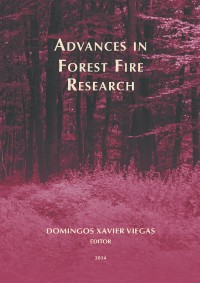Please use this identifier to cite or link to this item:
https://hdl.handle.net/10316.2/34208| Title: | Sensor grid for fine particles monitoring during a fire: implications to firefighter’s safety | Authors: | Amorim, J.H. Miranda, A.I. Valente, J. Cascão, P. Martins, V. Ribeiro, L.M. Viegas, D.X. |
Keywords: | Real scale fire experiments;Smoke emissions;Fire safety;Smoke exposure | Issue Date: | 2014 | Publisher: | Imprensa da Universidade de Coimbra | Journal: | http://hdl.handle.net/10316.2/34013 | Abstract: | Forest fires are a massive source of air pollutants to the atmosphere causing several environmental and human impacts. It is generally accepted that firefighters are potentially exposed to critical levels of air pollution during fire suppression activities (both in direct combat and mop-up), but the concentrations attained in these areas are still scarcely quantified because of the difficulty inherent to the monitoring of air quality close to the fireline. The goal of this work is to provide a better understanding of the spatiotemporal dynamics of the smoke plume, and resulting levels of fine particles, in the proximity of a fire, and how this translates into human safety issues. The experimental study area is located in the mountain range of Lousã, Central Portugal. Ten in-continuum monitoring sensors were positioned at a distance of 5 m (8 sensors) and 10 m (2 sensors) from the top boundary of the burn plot, and at 1.7 m above ground. The concentration of particulate matter with an equivalent aerodynamic diameter smaller than 2.5 μm (PM2.5) was measured during a total period of 50 minutes, capturing the effect of both flaming and smouldering emissions. The results presented in this work highlight the fact that the concentration of fine particles in the atmosphere close to the fireline is extremely dynamic, with differences between sensors that go up to 540% in terms of average concentrations and 170% in peak values. This is particularly relevant taking into account that these values correspond to sensors at a distance of 10 m. This conclusion suggests that in a single fire crew considerable differences in the exposure of its members can occur depending on their task/position relating the fireline. For this particular burning plot the time evolution of the observations reveals a dip in PM2.5 concentration that is not explained by the analysis of smoke plume dynamics in video recordings, suggesting that under certain circumstances the visual estimate of fire safety conditions can be misleading due to e.g. reduced visibility. In wildfire suppression operations the safety of the involved personnel should rely also in the use of personal exposure monitoring equipment for the prevention of potentially critical exposure. | URI: | https://hdl.handle.net/10316.2/34208 | ISBN: | 978-989-26-0884-6 (PDF) | DOI: | 10.14195/978-989-26-0884-6_166 | Rights: | open access |
| Appears in Collections: | Advances in forest fire research |
Files in This Item:
| File | Description | Size | Format | |
|---|---|---|---|---|
| 978-989-26-0884-6_166.pdf | 1.6 MB | Adobe PDF |  |
Items in DSpace are protected by copyright, with all rights reserved, unless otherwise indicated.
